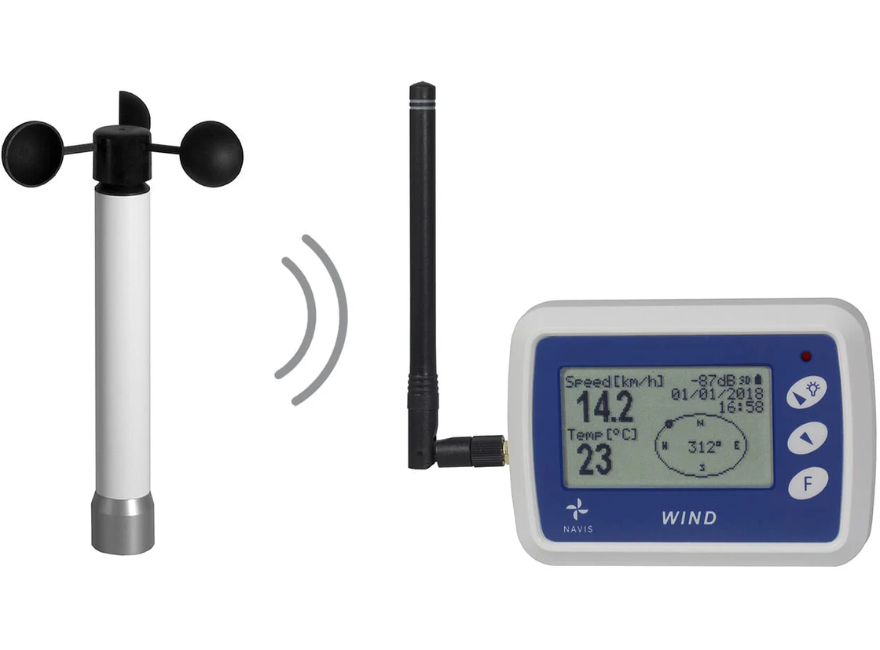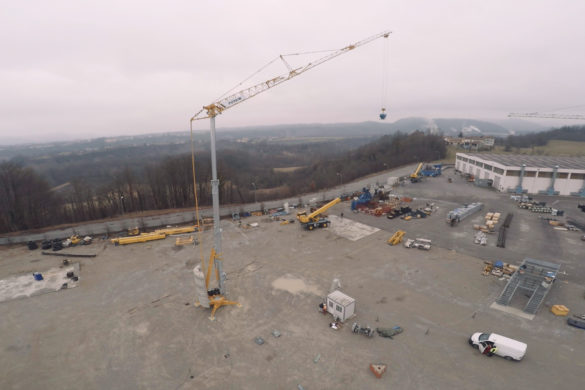Understanding how wind behaves affects everyday life, work, and safety in ways people often overlook. Anemometers transform invisible air movement into clear, usable data that anyone can rely on. Farmers can schedule irrigation and spraying knowing wind patterns, pilots adjust flight plans for safety, and builders design structures to endure changing pressures. The numbers provided by these instruments guide decisions that protect lives, property, and resources. Watching the blades spin or listening to ultrasonic signals may seem simple, but the impact stretches across communities and industries. Accurate wind measurement is not just science; it connects people to the environment around them.
What Is Wind, Scientifically?
Understanding wind scientifically involves examining how air moves across the Earth and the forces that drive it. Wind forms when air shifts from areas of high pressure to areas of low pressure, creating motion that affects weather patterns, daily life, and the environment. Sunlight warms some regions faster than others, causing warm air to rise while cooler air sinks, forming currents. Mountains, valleys, lakes, and oceans further guide these currents, bending or accelerating the flow depending on the terrain. The earth’s rotation curves the paths of air, creating patterns that stretch across continents and oceans and influence communities near and far.
What Causes Air Pressure Differences?
Air pressure differences occur when the weight of air above a region changes. Warmer air expands and becomes lighter, rising into the atmosphere, while cooler air remains denser and sinks toward the ground. These shifts produce high-pressure and low-pressure areas, and air naturally moves from dense to lighter regions, creating wind. Sunlight influences these differences significantly because it warms land and water unevenly, resulting in constant pressure changes. Observing these variations allows pilots to plan safer flights, farmers to schedule irrigation and spraying, and communities to prepare for windy conditions that could affect daily activities.
Other Forces That Shape Wind
Wind patterns are shaped not only by pressure differences but also by several natural forces. The Earth’s rotation influences air movement, bending wind paths and affecting direction and speed across wide areas. Mountains and valleys channel wind, forcing it to rise, slow down, or change direction, creating local weather effects. Large bodies of water affect nearby air temperatures, producing coastal breezes or modifying storm behavior. Urban landscapes, including buildings and trees, alter wind near the ground, creating turbulence or slowing gusts. Recognizing these factors helps communities plan infrastructure, manage outdoor activities, and respond effectively to sudden changes in weather.
Types of Wind
Winds vary in type depending on strength, duration, and source, and each has a role in shaping the environment. Gentle breezes offer relief in hot areas and move air through markets, homes, and fields. Persistent winds, such as trade winds, guide ships across oceans and influence rainfall patterns. Sudden gusts can surprise people outdoors or challenge pilots and sailors. Local winds develop when land heats faster than water, creating predictable coastal or valley breezes. Global winds carry air over large distances, affecting climates and agricultural patterns across countries. Understanding these types allows people to respond appropriately to changing conditions.
Key Wind Parameters
Measuring wind involves several parameters that describe its behavior. These metrics help people make informed decisions that keep life, property, and work safe. Instruments such as anemometers record wind speed, direction, and variations over time. Observing wind closely allows farmers, pilots, builders, and energy managers to plan and act safely. Understanding these parameters transforms invisible air into actionable information that supports daily life and industrial operations.
Wind Speed
Wind speed measures the rate at which air moves across a given area. Higher speeds can influence travel, construction, and agricultural work, while slower winds may provide gentle cooling or air circulation. Monitoring wind speed allows people to anticipate changes, prepare equipment, and reduce risks in environments exposed to strong currents.
Wind Direction
Wind direction indicates the origin of air movement and plays an important role in planning activities. Farmers use it to avoid spraying chemicals when air could carry them into unintended areas. Pilots adjust takeoffs and landings according to wind direction, and construction teams plan crane and material placement with this information. Accurate knowledge of direction ensures that daily activities and projects proceed safely.
Gusts
Gusts represent sudden increases in wind strength that appear unexpectedly. These variations can affect outdoor work, traffic, or equipment operation. Observing gusts prepares people for abrupt changes, reducing potential hazards and protecting lives.
Turbulence
Turbulence occurs when wind flows irregularly, producing unpredictable swirls and patterns. It can impact aviation safety, road travel for large vehicles, and outdoor comfort. Recording turbulence data helps engineers design resilient structures and pilots adjust flight paths for safety and stability.
Why These Values Matter
Understanding wind speed, direction, gusts, and turbulence allows communities to act wisely. Accurate measurements protect people and property, guide safe planning, and support agricultural and industrial operations. Tracking these values transforms invisible forces into practical knowledge that helps people live, work, and travel safely while making informed decisions about the environment around them.
How Anemometers Capture Wind Data
Learning and understanding anemometers clearly shows how air moves in different environments, turning invisible wind into measurable information. These instruments allow farmers, pilots, and builders to make informed decisions that protect people, property, and resources. Each type of anemometer uses a different method to record wind behavior, showing how technology combines science with practical needs. Reading wind data allows communities to act safely and efficiently, whether scheduling agricultural work, planning flights, or designing structures. Instruments record speed, direction, and variations over time, providing insights that guide daily operations.
Cup and Vane Anemometers
Cup and vane anemometers rely on mechanical movement to capture wind information. Cups rotate when pushed by the air, and the rotation speed shows how fast the wind blows. A vane aligns with the wind, indicating direction. These instruments have been used for decades because they work reliably in many conditions. Farmers can place them in open fields, construction teams can monitor site conditions, and airports can track runway winds. Mechanical parts may require maintenance, but the simplicity of this design allows continuous monitoring even in areas where digital instruments are not practical.
Ultrasonic Anemometers
Ultrasonic anemometers measure wind by sending sound pulses between transducers. Changes in travel time of these pulses reveal both speed and direction. The absence of moving parts reduces maintenance needs and improves accuracy in difficult weather conditions. Energy companies often use them on wind turbines, while meteorologists rely on them for precise local readings. These instruments can detect subtle shifts in air flow, making them suitable for research and operations where minor variations have a significant impact. Their precision and durability make them popular where accurate monitoring is required over long periods.
Hot-Wire Anemometers
Hot-wire anemometers detect wind speed using temperature changes on a thin wire heated electrically. As air passes over the wire, it cools at a rate that indicates airflow. This method allows rapid measurement of even small gusts and turbulence. Laboratory studies, industrial settings, and environmental monitoring often rely on hot-wire devices because of their sensitivity. The data they provide can reveal fluctuations other instruments may miss, helping engineers, scientists, and operators plan more effectively. Handling them requires careful setup, but the level of detail they offer makes them valuable for specialized applications.
Why Placement and Calibration Matter
Accurate readings depend on proper placement and regular calibration. Obstacles like buildings, trees, or uneven terrain can change wind flow, producing misleading data. Sensors installed at the correct height and away from obstructions capture measurements that reflect true conditions. Calibration ensures that the instrument’s output corresponds to actual wind parameters. Regular checks allow operators to detect drift or mechanical wear before it affects results. Correct placement and maintenance allows all types of anemometers to provide reliable information, giving people confidence in their decisions based on the data.
The Importance of Accurate Wind Measurement
Reliable wind measurement improves safety, efficiently, and planning across many industries. Communities, pilots, and engineers depend on data to act confidently in changing conditions. Accurate readings prevent accidents, optimize energy use, and guide infrastructure development. Wind is invisible, yet its effects are tangible, making precise monitoring essential for protecting people and resources.
Safety Across Critical Operations
Operations such as aviation, shipping, and construction rely on accurate wind data to prevent hazards. Pilots adjust flight paths and takeoffs based on readings, while cranes and lifts operate safely when crews know wind behavior. Construction managers can plan schedules that avoid risks, and emergency services can predict potential dangers in storms or strong winds.
Designing Structures to Withstand Pressure
Engineers and architects use wind data to plan buildings that endure gusts, turbulence, and persistent currents. Accurate measurements guide material choice, structural reinforcement, and orientation to minimize stress. Monitoring wind patterns ensures that designs reduce risk to residents, workers, and equipment while maintaining long-term durability.
Boosting Energy Efficiency
Wind turbines, ventilation systems, and even urban planning benefit from precise measurements. Knowing wind behavior allows operators to optimize turbine placement, adjust airflow in industrial settings, and reduce energy waste. Accurate wind data supports both economic and environmental goals, helping communities harness natural forces intelligently.
Factors That Affect Wind Readings
Accurate wind measurements depend on environmental conditions, sensor placement, and equipment quality. Understanding how different factors influence readings allows people to make better decisions in aviation, farming, construction, and energy management. Wind does not move through empty space alone; the surrounding environment can significantly change how it behaves, and instruments must account for these influences to provide reliable data.
Physical Obstructions and Surroundings
Buildings, trees, hills, and other obstacles can alter airflow, creating turbulence, deflection, or shadow zones where wind speed is lower. Sensors installed too close to these structures may record misleading values that do not represent open-area conditions. Observing local surroundings and choosing the right installation height helps instruments capture data that reflects real wind behavior, supporting safer planning and operations.
Environmental and Thermal Factors
Temperature differences, sunlight, and surface conditions influence air movement near the ground. Hot pavement, shaded valleys, or water bodies can cause local winds to accelerate, decelerate, or change direction unexpectedly. Weather changes, humidity, and seasonal variations also affect readings. Accounting for these conditions allows operators to interpret data accurately, ensuring activities like spraying crops, fliying aircraft, or lifting materials happen under safe conditions.
Calibration and Sensor Maintenance
Regular calibration ensures that sensors provide correct values over time. Mechanical wear, dust accumulation, or electronic drift can gradually affect readings. Maintenance schedules that include cleaning, testing, and adjusting instruments prevent errors and improve reliability. Proper calibration and upkeep allow communities and industries to trust the data they use for planning, safety, and energy optimizations.
Evolving Measurement Technology
Wind measurement technology continues to improve, offering more precise, durable, and versatile instruments. Anemometer modern weather forecasting innovations include digital sensors, ultrasonic devices, and integrated monitoring systems that provide real-time data for multiple applications. These advancements allow communities, farmers, engineers, and energy operators to make faster and better-informed decisions, reducing risks and improving efficiency.
Conclusion
Accurate wind readings influence safety, planning, and efficiency across many sectors. Observing environmental factors, ensuring proper sensor placement, and maintaining instruments contribute to trustworthy data. Communities and industries that pay attention to these details gain confidence in daily decisions and long-term planning. Learn more about how wind monitoring supports safety and operations at Crane Blogger, where practical insights meet scientific understanding.




